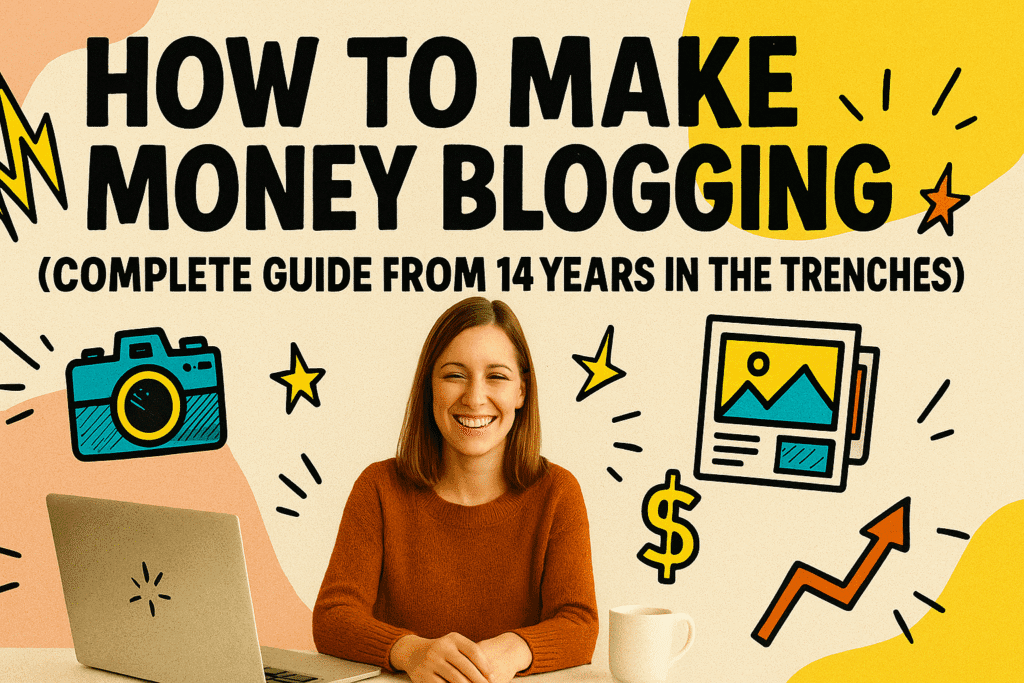
Quick Summary / Key Takeaways
- Blogging isn’t dead — but it’s not overnight riches either.
- Bloggers earn money through brands, affiliates, ads, products, services, memberships, and email funnels.
- Burnout is real — boundaries are as important as monetization.
- Google’s Helpful Content Update (HCU) and AI are changing the game, but adaptability keeps bloggers profitable.
- Treat your blog like a business, and it can still create income streams worth six figures.
Stats Snapshot & Comparison Tables
| Income Stream | Typical Timeline | Beginner Earnings | Scalable Potential | Effort Level |
|---|---|---|---|---|
| Sponsored Posts | 6–12 months | Free product → $100/post | $5k+/month | Medium (pitching + deliverables) |
| Affiliate Marketing | 6–18 months | $50–$500/month | $10k+/month | High upfront (SEO + traffic) |
| Display Ads | 12+ months | $0–$200/month | $20k+/month | Passive (needs traffic) |
| Digital Products | 6–12 months | $100–$1,000/month | $50k+/month | High (create + market) |
| Services/Freelancing | Immediate | $500–$5,000/month | Limited by time | Medium (client work) |
| Memberships | 12+ months | $100–$1,000/month | $10k+/month | High (community building) |
| Email Funnels | 6–12 months | $100–$500/month | $20k+/month | Medium (setup + nurture) |
Table of Contents
I started blogging 14 years ago, and from the very first post, I knew I had stumbled into the right path.
My very first “brand deal” was a Berkey water filter — and I thought I had made it. That review felt like a golden ticket. Soon after, I was knee-deep in reviews and giveaways, hustling to get my name out there. It was scrappy, it was exhausting, but it was intoxicating.
Blogging opened doors I never imagined. I pivoted into food blogging and started earning from traffic. I built a list, then sold to it: a paid recipe club, ebooks, affiliate products from friends. I parlayed that into coaching and teaching other bloggers. Blogging gave me a cookbook deal, speaking gigs, and paid recipe work. Whole Foods paid me in gift cards, and I walked out of their store once with two overflowing carts of groceries, all because I wrote recipes on the internet.
And then there were the surreal, pinch-me moments. The time Oprah’s team emailed me about featuring one of her recipes on my site. The day Boy George tweeted me asking about one of my recipes. I mean—Boy George! I had to laugh at the absurdity of it. Blogging wasn’t just about traffic numbers or ad RPMs anymore. It was a portal into the strangest, most unexpected connections.
I also remember speaking at a WordPress conference. Afterward, I went to a meetup hosted by someone I’d met there. She introduced me to the room as “famous,” and I nearly jumped out of my skin. I’m an INFJ at heart, an introvert who thrives on deep one-on-one conversations, not the spotlight. Fame, even in a niche corner of the internet, felt like wearing clothes that didn’t fit. The truth is, I only pushed through so much of it because blogging paid the bills — and there were no exceptions.
But the highs came with lows. Traffic could vanish overnight after a Google update. Brand deals that felt like sure things would disappear. The grind was endless — content never sleeps. I was always chasing the next post, the next idea, the next project, because if I stopped, I feared it would all slip away. I was chained to the internet. Rest didn’t exist. Boundaries didn’t exist. It wasn’t until I sold my recipe blog that I could finally exhale.
I won’t sugarcoat it: blogging burned me out. I pivoted into food photography for other bloggers, which let me stay creative while still paying the bills. I met incredible people through that work, and it gave me breathing space. To this day, the thought of creating recipes makes me tired. Maybe one day — maybe in my sixties — I’ll cook again for the joy of it. For now, I’m good.
And yet, despite all the exhaustion, the burnout, the algorithm gut-punches, I can say without hesitation that blogging changed my life. At its peak, my blog could have sold for over $100,000. I sold later, after Google’s Helpful Content Update (HCU) slammed so many sites, but I don’t regret it. The legacy of A Girl Worth Saving lives on, even as I create something new.
Blogging gave me opportunities money can’t buy. It gave me a voice, a platform, a strange kind of influence I never sought but sometimes stumbled into. It gave me groceries, travel, community, and even a kind of fame I didn’t know how to wear. It gave me friendships and freedom, but also sleepless nights and endless deadlines.
If there’s one thing I’ve learned in 14 years, it’s this: blogging isn’t easy money. It isn’t overnight riches. It’s grit. It’s showing up when you don’t want to. It’s pushing past fear and burnout and criticism. It’s reinventing yourself when the landscape shifts — and it will shift.
AI is changing blogging the way Google once did. It’s scary, but it’s also exciting. The truth is, blogging has always been about adapting. Those who treat it like a business — who set boundaries, diversify income, and build trust with their audience — will keep winning, even when the rules change.
That’s why I’m writing this guide. Not to sell you a dream of passive income while you sip lattes on a beach. But to show you the real ways bloggers make money, the methods that work in 2025, and the lessons I learned the hard way so you don’t have to repeat them.
Section 1: Working With Brands (Sponsored Posts + Partnerships)
When people first ask me how I made money blogging, I almost always say the same thing: I started by working with brands.
My very first brand deal? A Berkey water filter. They sent it to me for free in exchange for a review, and I thought I had hit the jackpot. That review wasn’t glamorous or high-paying, but it was proof that blogging could be more than a hobby. For the first time, my little corner of the internet had real-world value.
After that, it snowballed. I reviewed everything from specialty foods to kitchen gadgets. I ran giveaways that had my readers buzzing. Then came the bigger collaborations: Whole Foods hired me to develop recipes, and while they didn’t pay cash at first, they gave me gift cards. I still remember pushing out two carts overflowing with groceries and laughing that my blog had just fed my family for weeks.
It wasn’t long before the offers became more serious. Paid recipe development, cookbook deal opportunities, and later speaking gigs. At one point, I had Oprah’s team emailing me about featuring one of her recipes. And one day, I got a tweet from Boy George himself asking about one of my recipes. It was surreal, strange, and exhilarating — all because of blogging.
But here’s the truth: working with brands isn’t just about luck or who notices you. It’s a business relationship, and if you approach it that way, it can be one of the most reliable early income streams for bloggers.
What “Working With Brands” Really Means
- Sponsored blog posts
- Social media promotions
- Product reviews
- Giveaways
- Long-term partnerships/ambassadorships
How Much Do Bloggers Get Paid for Brand Deals?
- Beginners: $50–$250/post
- Intermediate (10k–50k readers): $250–$1,000
- Established (50k–100k+): $1,000–$5,000+ packages
- Influencers: $10k+ for campaigns
How to Start Working With Brands
- Build your portfolio. If you’re brand new, don’t wait for someone to ship you free stuff. Start by reviewing products you already own and love. Write a thoughtful blog review, share a fun social media post, and tag the brand. That gives you a real example to point to later. Don’t claim you’ve “worked with” the brand — instead say, “I’ve featured [BRAND] on my blog. Here’s an example.”
- Try product before cash. Many beginners start with free products. That’s fine — use those posts to prove you can drive engagement. If your audience responds well, go back to the brand and pitch a paid collaboration. Showing results is the fastest way to move from free blender to cash deal.
- Create a media kit. Your media kit is your resume. Include traffic, demographics, audience engagement, and past collaborations (or “features” if you’re just starting out).
- Start pitching directly. Don’t wait for brands to find you. Be proactive.
- Negotiate confidently. Even small blogs with engaged audiences can ask for cash + product.
- Deliver quality and build relationships. One-off posts are nice, but long-term partnerships are where the real money is.
How to Pitch Brands (My Cold Outreach Formula)
Here’s the exact structure I used for my pitches:
Subject line:PR Inquiry – Featured on [BLOG]
Opening line (credibility first):
Hi, my name is Kelly, I’m the creator behind [BLOG]. My work has been featured on [SITES] and I’ve worked with [BRANDS].
Body (interest + proof):
I’d love to share [YOUR PRODUCT] with my audience. Here’s an example of a past campaign I did with [BRAND].
Close (media kit + next step):
If it’s helpful, here’s my media kit [LINK]. I’d love to talk about ways we could collaborate.
That formula landed me everything from a Blendtec blender to free hotel stays. Some brands ignored me, some said no, but enough said yes to keep me moving forward.
Pro tip: Use LinkedIn or Hunter.io to find the PR or marketing contact, or look for “Press Inquiries” on the brand’s site.
Why Professionalism Matters
This is not a hobby. Hobbies don’t come with contracts, deliverables, or deadlines. Blogging for money means treating it like a business. That means being on time, hitting deadlines, and showing brands you’re reliable.
I’ve seen plenty of bloggers blow opportunities by ghosting brands or sending sloppy work. Those folks don’t get called back. But when you show up, deliver polished content, and make their product shine, brands remember you — and they bring you more work. My own career proves it: the more professional I became, the more opportunities opened.
Pitfalls to Avoid
- Undervaluing your time.
- Overcommitting and overwhelming your blog with ads.
- Promoting products you don’t believe in.
- Skipping contracts.
My Takeaway
Working with brands was my gateway into blogging income. It started with a water filter, moved into grocery hauls from Whole Foods, grew into Blendtec blenders and hotel stays, and eventually snowballed into cookbook deals, speaking gigs, and partnerships that shaped my entire career.
But here’s the secret: it’s not just about who notices you. It’s about how you position yourself, how you pitch, and how you build relationships. If you treat brand deals as part of your business strategy — showing up consistently, delivering on time, and proving your value — they can fuel your blog’s early growth and create opportunities you never thought possible.
FAQs: Working With Brands
How do beginner bloggers get brand deals?
Beginner bloggers can get brand deals by proving they can create content that sells. That often starts with unpaid reviews — showcase how you’d naturally feature a product on your blog and social media. Once you have examples, reach out directly to brands you already use. A simple pitch could be: “I love your product, here’s how my readers would benefit, here’s the content I can create for you.”
In my early days, my first collaboration was a Berkey water filter review. It wasn’t paid, but it became the piece I used to pitch others. Within months, that portfolio turned into Whole Foods sending me gift cards and then into paid recipe posts.
Takeaway: Don’t wait for brands to discover you — show them how you can bring value.
How much should I charge for a sponsored post?
Pricing depends on your traffic, niche, and what you deliver. In 2025, most new bloggers undervalue themselves. Beginners may charge $50–$200 for a blog post, but even small blogs with engaged audiences can command $250–$500 if they include Instagram or email promotion. Once you’re established, packages with blog + photos + multiple social shares can hit $1,000–$5,000+.
A rough benchmark many influencers use: $100 per 10,000 monthly pageviews per sponsored post — but adjust based on your niche and effort.
Takeaway: Even with modest traffic, you can charge several hundred dollars if your audience is loyal and engaged.
Do brands pay in free product or cash?
Both. Early on, most deals are “in-kind” — free product in exchange for a post. While this builds your portfolio, it won’t pay your bills. The goal is to shift quickly to cash plus product. For example, I started with free products, then negotiated gift cards (Whole Foods), and later moved into flat-rate sponsored posts that paid hundreds of dollars each.
A healthy brand collaboration looks like this: the brand sends the product for free and pays you a content fee. That covers your time, labor, photography, and influence.
Takeaway: Free product is fine to start, but always aim for paid collaborations as proof of your blog’s value.
How do I avoid getting underpaid?
The fastest way to get underpaid is saying yes to “exposure” or vague promises. Protect yourself by:
- Setting a minimum rate for your time (know your floor).
- Researching influencer calculators (like Social Bluebook or AspireIQ benchmarks).
- Always using a contract that outlines deliverables and payment.
I’ve seen bloggers accept $50 for work that should have been $500+. Don’t let brands dictate your worth — you know the effort behind writing, photographing, editing, and promoting a post.
Takeaway: Value your time as much as the content. If the numbers don’t work, walk away.
Section 2: Affiliate Marketing for Bloggers (Summary)
Affiliate marketing lets you earn a commission every time someone buys through your referral link. It’s one of the most scalable ways to monetize because you aren’t trading time for money.
Examples: Amazon Associates (low commission, huge catalog), ShareASale/Impact (varied brands), and SaaS products (often 20–40% commission).
The key is alignment — recommending products your audience already wants. A food blogger might promote cookware or meal kits; a finance blogger might promote budgeting apps.
In 2025, affiliates still work, but conversions require trust. Readers want authentic recommendations, not endless link drops.
👉 Read the full guide: Affiliate Marketing for Bloggers in 2025
Section 3: Ad Networks & Display Ads (Summary)
Ads are the most “passive” income stream once you hit traffic thresholds. Networks like Mediavine and Raptive typically require 50k+ sessions/month, while Ezoic offers beginner access.
RPMs (revenue per thousand views) range from $10–$40 depending on niche. Lifestyle and food often pay higher; finance and tech can spike even higher.
Ads scale with traffic, but they’re volatile — one algorithm hit and earnings nosedive. They work best as part of a diversified strategy.
👉 Read the full guide: Mediavine vs. Raptive: Which Ad Network Pays More?
Section 4: Digital Products (Summary)
Digital products give you control. They take work upfront, but margins are huge. Examples: ebooks, courses, printables, templates, paid recipe clubs.
I launched a paid recipe club that gave me recurring income, plus ebooks and printable bundles. These let me earn without depending on brand whims or algorithm traffic.
Best practice: start small (a $9 printable) and scale up (full course or membership).
👉 Read the full guide: How to Create and Sell Digital Products as a Blogger
Section 5: Services & Freelancing (Summary)
Your blog doubles as a portfolio. That’s how I pivoted into food photography for other bloggers, and even coaching.
Services are the fastest way to make money — you can land clients today. The trade-off: limited scalability, since income depends on your time.
Ideal for bloggers who want stability while building other streams.
👉 Read the full guide: How to Land Freelance Clients Through Blogging
Section 6: Memberships & Subscriptions (Summary)
Recurring income from memberships (Patreon, Ko-fi, or self-hosted clubs) is powerful but requires a loyal community.
Recipe clubs, exclusive content libraries, or premium newsletters are common models.
Retention is the hard part — you must keep delivering value monthly.
👉 Read the full guide: How to Start a Membership Blog
Section 7: Email Marketing & Funnels (Summary)
An email list is the most valuable “owned” asset a blogger can have. Algorithms shift, but your list is yours.
With a funnel in place, you can earn through affiliate promos, product launches, and membership pushes.
Start with a lead magnet (freebie), build trust, then offer paid products.
👉 Read the full guide: Email Marketing for Bloggers 101
Section 8: General FAQs About Making Money Blogging
How long does it take to make money blogging?
Typically 6–12 months before you see consistent income. Faster if you offer services, slower if you rely only on ads.
How much can a beginner realistically earn?
$100–$500/month in the first year is realistic. Growth snowballs as traffic and trust build.
Is blogging still profitable with AI?
Yes — but surface-level content is toast. Bloggers who offer unique voices, expertise, and community will thrive.
Do I need a niche?
Eventually, yes. You can start broad, but niches attract loyal readers and brand deals.
What mistakes cause bloggers to fail?
Burnout, chasing too many monetization methods at once, and ignoring SEO.
Section 9: Advanced Tips / Best Practices
- Diversify: no single income stream is stable forever.
- Build systems: hire VAs, use content calendars, automate emails.
- Avoid burnout: set boundaries — don’t live chained to the internet.
- Embrace change: AI, Pinterest shifts, and Google updates are constant. Adapt early.
Section 10: Wrap-Up
Blogging isn’t overnight money. It’s years of grit, adapting through Google updates and now AI shifts. But if you treat it like a business, set boundaries, and diversify your income streams, it can still be life-changing.
I’ve lived the highs (brand deals, cookbook, Oprah, Boy George) and the lows (burnout, HCU losses). And I’d still say: blogging is one of the most resilient online businesses you can build in 2025.
Author Bio
Kelly Bejelly has been blogging for 14 years. She’s a cookbook author, food photographer, blogging coach, and founder of multiple digital brands including A Girl Worth Saving, and Money Diary. She’s worked with brands from Berkey to Whole Foods and has taught hundreds of bloggers how to turn their sites into profitable businesses.
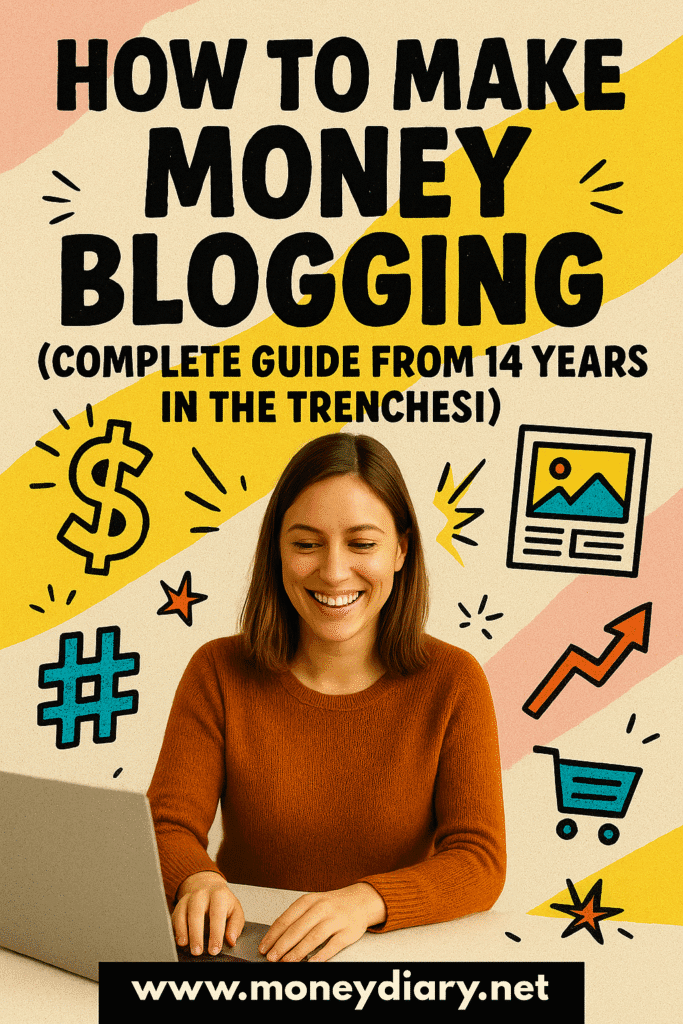
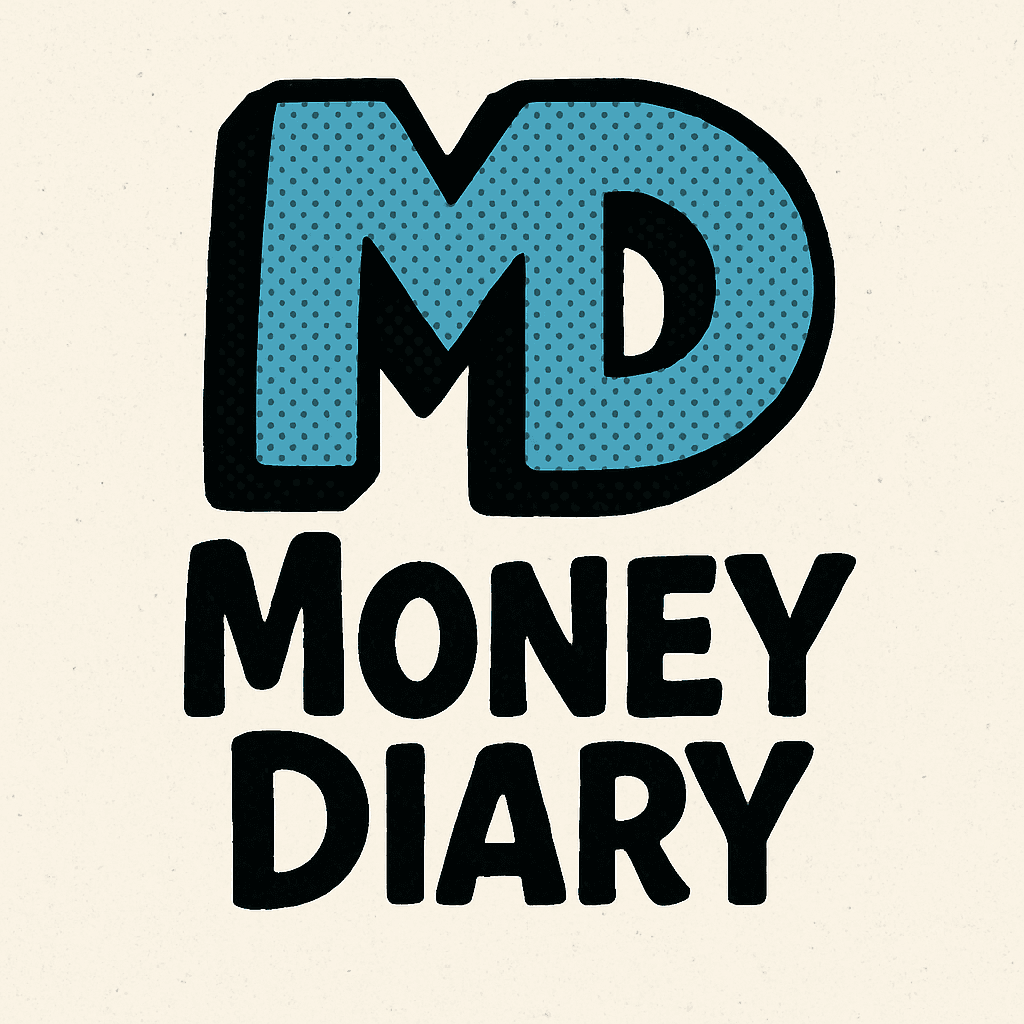

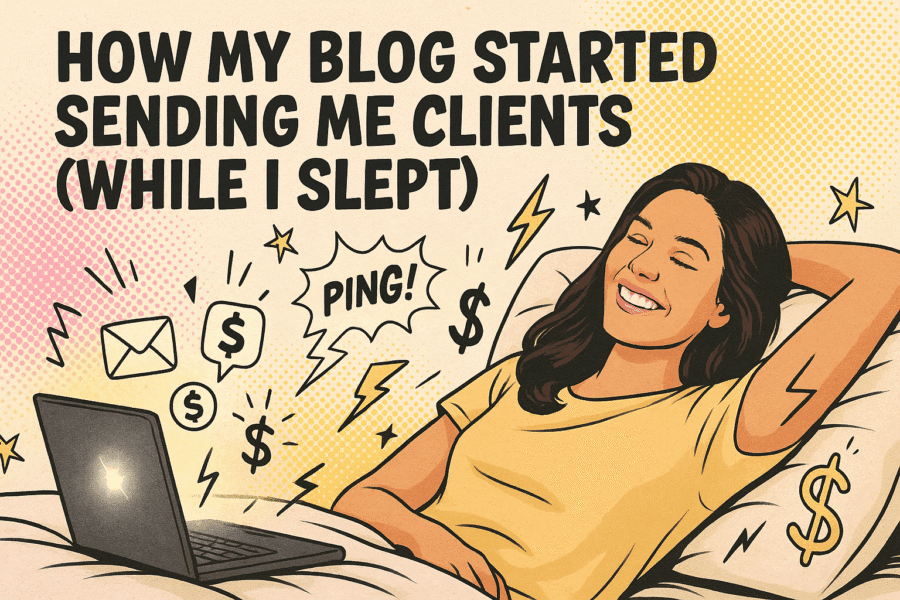
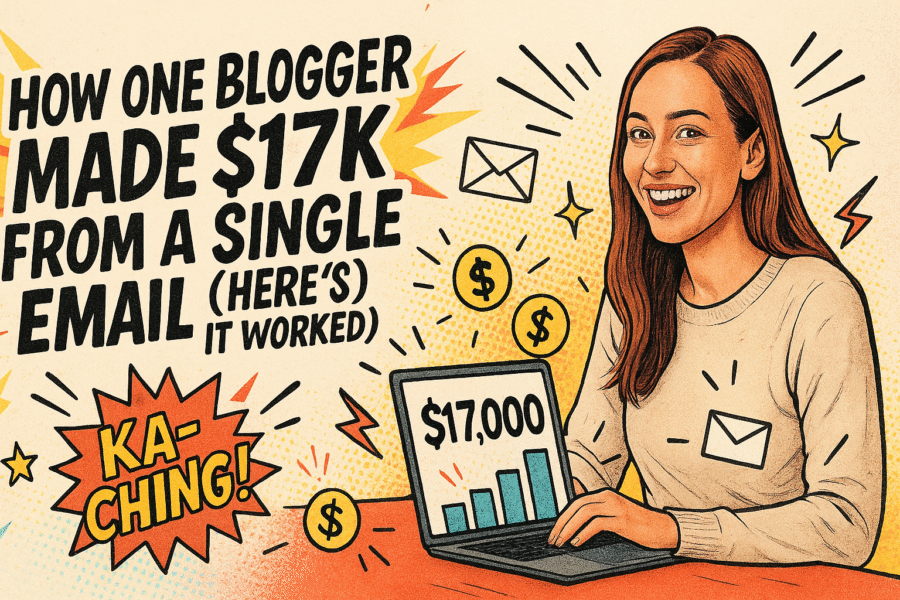
Leave a Reply